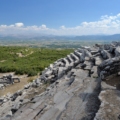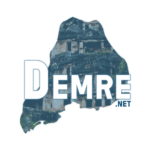Nestled along Turkey’s captivating Mediterranean coast, the ancient region of Lycia once flourished with cities renowned for their sophisticated culture, art, and architecture. Among these historical jewels, Myra shines brightly, inviting modern travelers to step into a fascinating past marked by legends, stone-carved tombs, and a vibrant cultural heritage that still echoes through the ages.
Myra: City of Rock Tombs and Amphitheaters
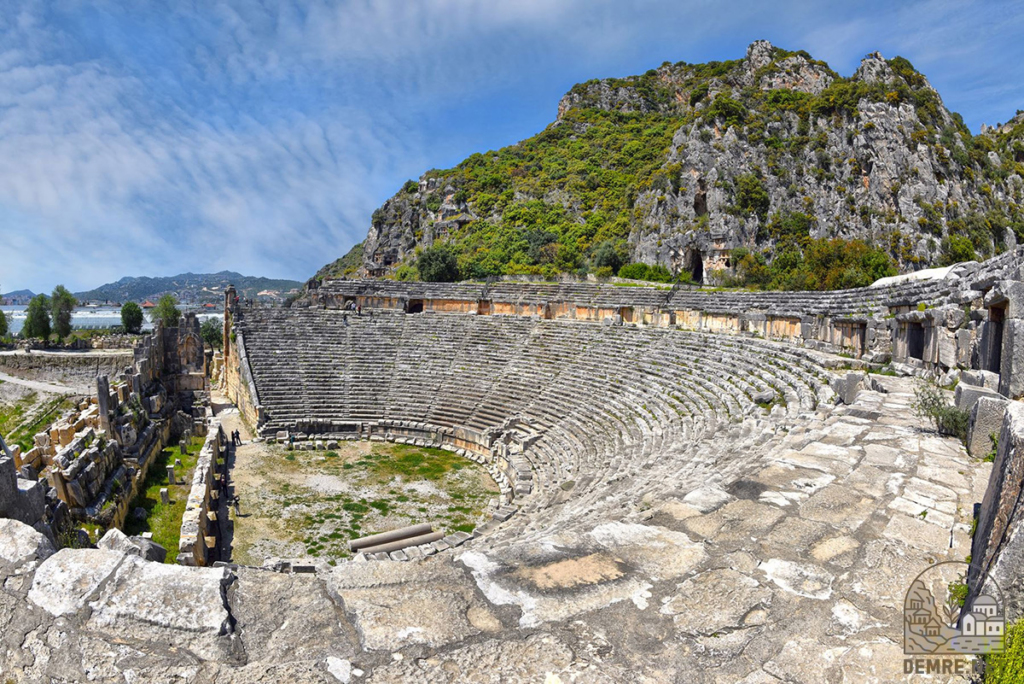
The ruins of Myra lie near modern-day Demre, a tranquil agricultural town that belies the grandeur of its ancient past. As you approach, Myra’s most striking features—majestic Lycian rock-cut tombs—appear dramatically carved into steep cliffs. These remarkable tombs, dating back to the 5th century BC, symbolize Lycian belief in the afterlife, with ornate façades mimicking wooden houses, complete with doors and windows etched eternally in stone.
Below these towering cliffs sits Myra’s beautifully preserved Roman amphitheater, capable of seating over 11,000 spectators. Imagine ancient performances unfolding beneath Mediterranean skies, echoing cheers of spectators across the stone tiers. It’s a place where history feels alive, and visitors become participants in the continuing narrative.
The Lycian Way of Life
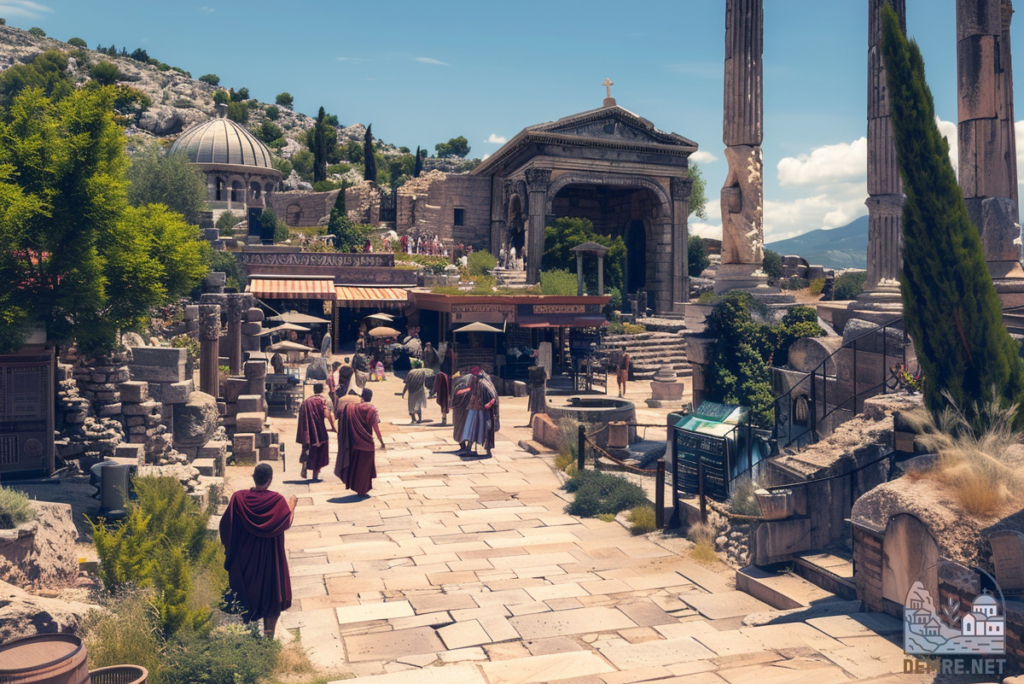
Lycians were known for their strong sense of independence, cultural sophistication, and artistry. They developed one of history’s earliest democratic systems and spoke a unique language, still visible today on inscriptions scattered throughout their cities.
Lycian culture revolved around the sea and mountains, influencing their architecture, mythology, and spiritual practices. Their monumental tombs were built high above ground, symbolizing their spiritual ascent to the heavens. Myra offers some of the most exquisite examples of this tradition, capturing the imagination of every traveler lucky enough to behold them.
Saint Nicholas and Myra’s Lasting Legacy
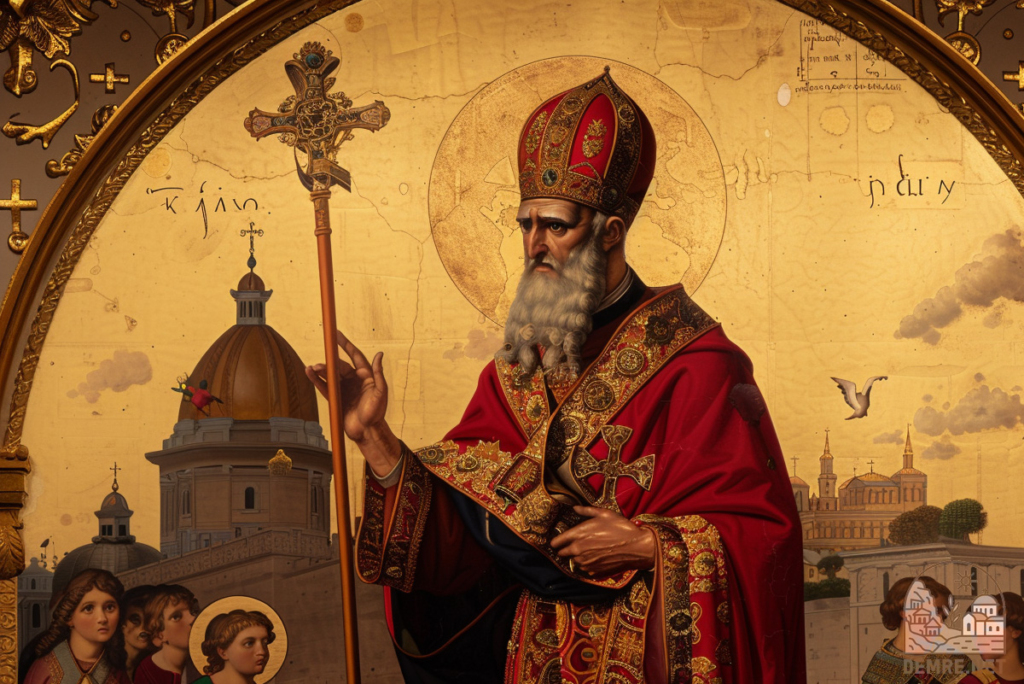
Myra’s history takes on a mythical dimension thanks to its most famous figure, Saint Nicholas, the legendary bishop renowned for generosity and compassion, who inspired the modern-day Santa Claus legend. The Church of Saint Nicholas, now a pilgrimage site, adds a spiritual layer to Myra’s rich tapestry. Its Byzantine frescoes, stone mosaics, and quiet sanctity provide a powerful connection to the past.
Exploring Beyond Myra
While Myra alone warrants exploration, the broader Lycian region brims with archaeological marvels. Patara, with its expansive sandy beaches and ancient ruins, was the Lycian capital and birthplace of Saint Nicholas. Xanthos, a UNESCO World Heritage Site, and the nearby sanctuary of Letoon reveal further secrets of Lycian spirituality and craftsmanship.
Traveler’s Tips:
- Best Time to Visit: Spring or autumn for pleasant weather and fewer crowds.
- Must-See Sites: Rock tombs of Myra, Roman amphitheater, Church of Saint Nicholas, and the nearby Lycian sites of Patara, Xanthos, and Letoon.
- Local Experience: Pair your historical journey with local cuisine in Demre, sampling fresh seafood, olive oil-rich dishes, and vibrant Mediterranean flavors.
Exploring Myra and Lycia is more than sightseeing—it’s a profound journey through time. Here, history whispers stories of gods, democracy, and human creativity in the ear of every visitor fortunate enough to walk these ancient paths.

